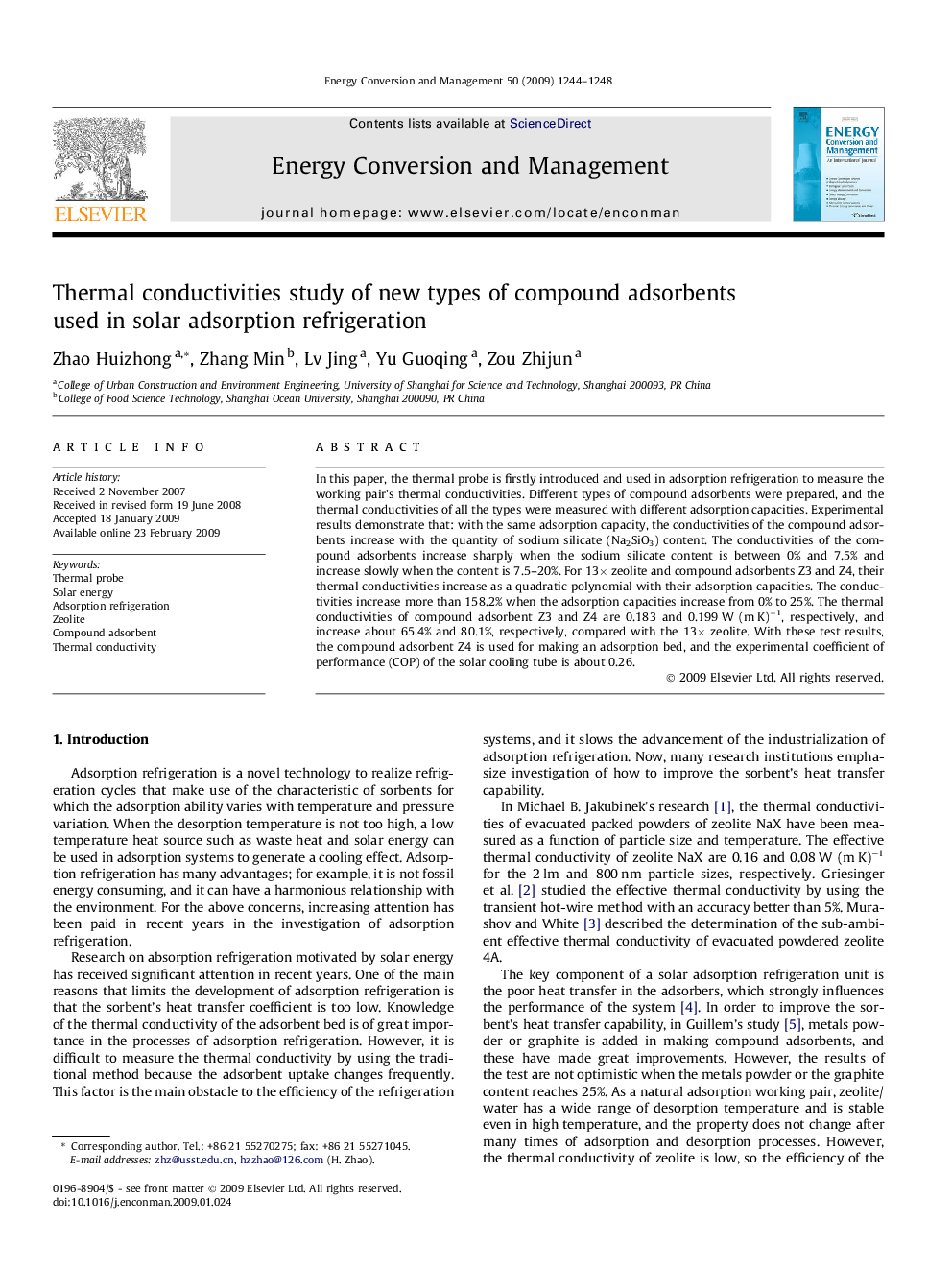| Article ID | Journal | Published Year | Pages | File Type |
|---|---|---|---|---|
| 765055 | Energy Conversion and Management | 2009 | 5 Pages |
In this paper, the thermal probe is firstly introduced and used in adsorption refrigeration to measure the working pair’s thermal conductivities. Different types of compound adsorbents were prepared, and the thermal conductivities of all the types were measured with different adsorption capacities. Experimental results demonstrate that: with the same adsorption capacity, the conductivities of the compound adsorbents increase with the quantity of sodium silicate (Na2SiO3) content. The conductivities of the compound adsorbents increase sharply when the sodium silicate content is between 0% and 7.5% and increase slowly when the content is 7.5–20%. For 13× zeolite and compound adsorbents Z3 and Z4, their thermal conductivities increase as a quadratic polynomial with their adsorption capacities. The conductivities increase more than 158.2% when the adsorption capacities increase from 0% to 25%. The thermal conductivities of compound adsorbent Z3 and Z4 are 0.183 and 0.199 W (m K)−1, respectively, and increase about 65.4% and 80.1%, respectively, compared with the 13× zeolite. With these test results, the compound adsorbent Z4 is used for making an adsorption bed, and the experimental coefficient of performance (COP) of the solar cooling tube is about 0.26.
